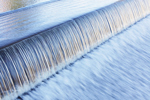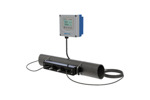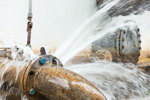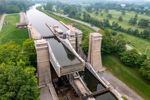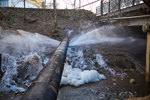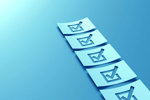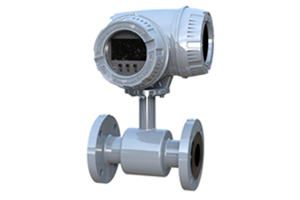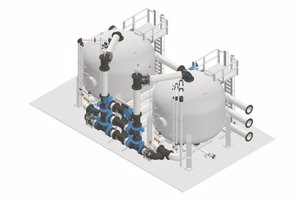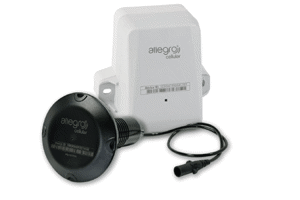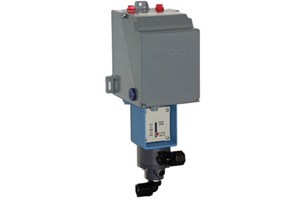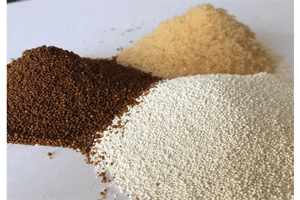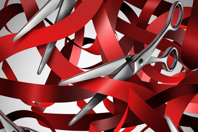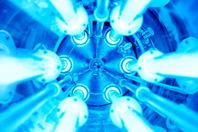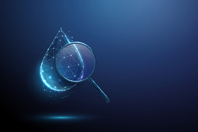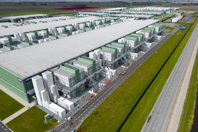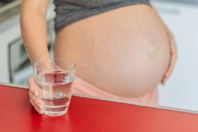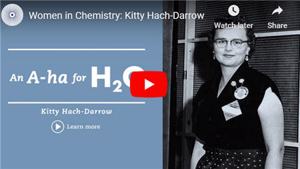DRINKING WATER
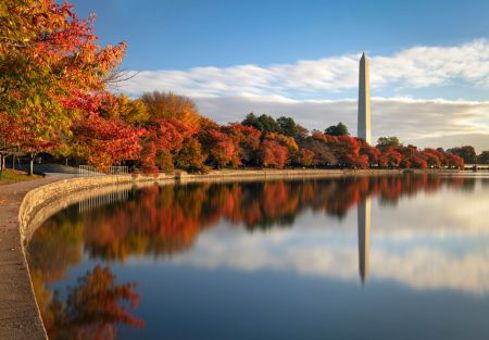 Engineering Resilience In Water Supply: How Ozone-Based Oxidation Supports DC Water's Pure Water DC Vision
Engineering Resilience In Water Supply: How Ozone-Based Oxidation Supports DC Water's Pure Water DC Vision
Securing urban water futures requires shifting toward resilient, multi-source supplies. Advanced oxidation provides a critical barrier against emerging contaminants, enhancing treatment efficiency and ensuring long-term reliability without chemical residuals. Explore the foundations of engineering a decentralized, drought-proof water supply.
DRINKING WATER CASE STUDIES AND WHITE PAPERS
-
AEC System Proven Effective For Chloride Removal
In two bench-scale tests, a new technology effectively removed up to 99% of chlorides and 97% of total dissolved solids in a single pass. This solution offers a commercially viable alternative to traditional treatment methods.
-
How Ultrasonic Clamp-On Meters Deliver Savings To Users
Ultrasonic clamp-on meters offer a cost-effective alternative to traditional electromagnetic meters (also called mag meters) and other metering technologies for non-billing applications.
-
Internet Of Water To Tackle Growing Water Risks
Flanders pioneers the internet of Water, a unique intelligent water management system based on a network of connected sensors, that enables a permanent and real time follow-up of water quality and water quantity. This internet of Water will enable Flanders to tackle the growing threat of water inconvenience, water scarcity and water pollution.
-
Why Water Utilities Need A Leak Detection System
An LDS leverages existing meters, sensors, and other instrumentation to more precisely pinpoint leak locations, saving time, money, and manpower spent scouring and searching.
-
Severn Trent Exceeds Leak Reduction Targets With Innovative Itron Water Solutions
Severn Trent’s smart metering program, powered by Itron’s technology, is transforming water conservation—reducing leaks by 6 million liters, cutting costs, and empowering customers to use water more wisely.
-
Pipeline Management Through Measurement
Pressure transients can be reduced through changes in pump operations and valve usage. Intelligent pipeline monitoring, combining pressure data with analytics, helps utilities prevent problems and educate operators and customers.
-
5 Ways To Ensure Your AMI Transition Is A Success
While AMI’s benefits are widely recognized, implementation remains a major challenge for many utilities. This article offers practical insights into navigating the complex path to AMI deployment.
-
Drinking Water Treatment: Tianjin, China
Favorable reviews of UV technology in wastewater applications influenced Tianjin Economic Development Area (TEDA) Water Supply General Company to investigate the potential of using UV for drinking water applications at one of its water treatment plants.
-
Project Profile: Meadow Lake MHC White Lake, MI 750 GPM Iron & Manganese System
In February 2008 AdEdge Technologies, Inc. was selected as the sole vendor by Sun Communities, a nation wide owner and operator of Mobile Home Communities, to supply an iron and manganese treatment system, for the Meadow Lake MHC in White Lake, Michigan. By Adedge Technologies Inc.
-
City Of Lodi Employs GAC To Remove Contaminants From Groundwater
In this case study, read about AV's unique Concept to Commission approach which enabled a team to design, manufacture, and install GAC systems and interconnecting site pipe in just 10 working hours.
DRINKING WATER APPLICATION NOTES
-
Irrigation Technology In Agriculture: How New Technologies Overcome Challenges1/29/2019
As the world’s population continues to increase at a fast pace, more food and water will be needed to sustain humanity. In the past 50 years, we have tripled our need for water and food, and there are no signs of this trend slowing down. As a result of these conditions, smart, innovative agricultural practices are needed now more than ever. Technology can, and already does, aid agriculture in innumerable ways. One prominent part of agriculture that can use technological innovation to increase efficiency and effectiveness is irrigation.
-
Harmonics Reduction Methods4/17/2017
There are several basic methods for reducing harmonic voltage and current distortion from nonlinear distribution loads such as adjustable frequency drives (AFDs). Following is a description of each method, along with each method’s advantages and disadvantages.
-
Aries Arsenic Reduction1/7/2026
Arsenic has no smell, taste, or color when dissolved in water even in high concentrations. It is a potential concern to those who live in areas with high natural deposits of arsenic, receive runoff from orchards, or from glass and electronic production waste. Long-term exposure to arsenic can cause a number of harmful effects on the human body including cancer, skin lesions, cardiovascular disease and diabetes, among others.
-
Determination Of Pesticide Residues In Honey, By An Automated QuEChERS Solution9/17/2014
The QuEChERS (Quick-Easy-Cheap-Effective-Rugged-Safe) sample extraction method was developed for the determination of pesticide residues in agricultural commodities.
-
Analyzing Total Organic Carbon In Sea Water4/2/2015
The analysis of Total Organic Carbon (TOC) in seawater can be both challenging and expensive. The concentration of organic carbon in seawater is of considerable interest. The effect this matrix can have on TOC analyzers can lead to rapid consumable turnover, costly maintenance and repairs.
-
Alcoholic Beverage Fusel Alcohol Testing With Static Headspace9/2/2014
A static headspace method was developed using Teledyne Tekmar automated headspace vial samplers to meet the method requirements of the Alcohol and Tobacco Tax and Trade Bureau of the US Department of the Treasury (TTB) method SSD: TM:2001 for testing fusel alcohols in alcoholic beverages.
-
Remote Monitoring And Maintenance Through Digitalization3/17/2020
Siemens offers to our customers the ability to make both process measurements, and to remotely monitor the activity and health of instrumentation, whether you have a SCADA, PLC or DCS system, or not. By utilizing Siemens’ ability to offer unparalleled flow, level, pressure, temperature, and weight measurement we can provide a broad range of process measurements and offer unequaled monitoring of the health and performance of those products.
-
The Active Control Program For Advanced UV Oxidation12/1/2025
This application note will explore how active control programs lower operational costs of compliant contaminant removal.
-
HOD™ (Hydro-Optic Disinfection) UV Water Treatment For Bottled Water3/27/2025
The HOD™ (Hydro-Optic Disinfection) UV water treatment system by Atlantium Technologies represents a groundbreaking advancement in drinking water disinfection, particularly for the bottled water industry.
-
Solution For Algae Blooms12/17/2015
Harmsco® Filtration Products is pleased to offer a solution to the ever increasing blue-algae blooms in water sources. A multi-barrier approach is necessary to physically remove intact (algae and cyanobacteria) before they rupture in the treatment process and then remove extracellular cyanobacteria through adsorption.
LATEST INSIGHTS ON DRINKING WATER
-
The White House has finalized plans to roll back rules under the National Environmental Policy Act (NEPA), narrowing its focus and limiting what the current administration claims are needless delays for federal approval of water, energy, and other infrastructure plans. For water and wastewater utilities, the changes could speed up permitting for critical projects, although experts warn the tradeoffs could do more harm than good.
-
Setting Global Standards: Inside North America's Only Full-Scale UV Disinfection Validation Facility
Portland's industry-leading facility reaches 100 reactor validations in 23 years.
-
Given the maturation of sensor technology, the scientific and operational hurdles to portable lead analysis are somewhat surprising — but surmountable.
-
Bathymetric modeling maps underwater terrain. It also helps guide planning, prevent hazards, and build climate-resilient infrastructure.
-
The data center industry stands at a critical juncture. As facilities scale to meet exponential computing demands, water consumption has emerged as a defining operational challenge. Traditional approaches focused on water efficiency are no longer sufficient.
-
When pregnant women drink water that comes from wells downstream of sites contaminated with PFAS, known as “forever chemicals,” the risks to their babies’ health substantially increase, a new study found. These risks include the chance of low birth weight, preterm birth, and infant mortality.
ABOUT DRINKING WATER
In most developed countries, drinking water is regulated to ensure that it meets drinking water quality standards. In the U.S., the Environmental Protection Agency (EPA) administers these standards under the Safe Drinking Water Act (SDWA).
Drinking water considerations can be divided into three core areas of concern:
- Source water for a community’s drinking water supply
- Drinking water treatment of source water
- Distribution of treated drinking water to consumers
Drinking Water Sources
Source water access is imperative to human survival. Sources may include groundwater from aquifers, surface water from rivers and streams and seawater through a desalination process. Direct or indirect water reuse is also growing in popularity in communities with limited access to sources of traditional surface or groundwater.
Source water scarcity is a growing concern as populations grow and move to warmer, less aqueous climates; climatic changes take place and industrial and agricultural processes compete with the public’s need for water. The scarcity of water supply and water conservation are major focuses of the American Water Works Association.
Drinking Water Treatment
Drinking Water Treatment involves the removal of pathogens and other contaminants from source water in order to make it safe for humans to consume. Treatment of public drinking water is mandated by the Environmental Protection Agency (EPA) in the U.S. Common examples of contaminants that need to be treated and removed from water before it is considered potable are microorganisms, disinfectants, disinfection byproducts, inorganic chemicals, organic chemicals and radionuclides.
There are a variety of technologies and processes that can be used for contaminant removal and the removal of pathogens to decontaminate or treat water in a drinking water treatment plant before the clean water is pumped into the water distribution system for consumption.
The first stage in treating drinking water is often called pretreatment and involves screens to remove large debris and objects from the water supply. Aeration can also be used in the pretreatment phase. By mixing air and water, unwanted gases and minerals are removed and the water improves in color, taste and odor.
The second stage in the drinking water treatment process involves coagulation and flocculation. A coagulating agent is added to the water which causes suspended particles to stick together into clumps of material called floc. In sedimentation basins, the heavier floc separates from the water supply and sinks to form sludge, allowing the less turbid water to continue through the process.
During the filtration stage, smaller particles not removed by flocculation are removed from the treated water by running the water through a series of filters. Filter media can include sand, granulated carbon or manufactured membranes. Filtration using reverse osmosis membranes is a critical component of removing salt particles where desalination is being used to treat brackish water or seawater into drinking water.
Following filtration, the water is disinfected to kill or disable any microbes or viruses that could make the consumer sick. The most traditional disinfection method for treating drinking water uses chlorine or chloramines. However, new drinking water disinfection methods are constantly coming to market. Two disinfection methods that have been gaining traction use ozone and ultra-violet (UV) light to disinfect the water supply.
Drinking Water Distribution
Drinking water distribution involves the management of flow of the treated water to the consumer. By some estimates, up to 30% of treated water fails to reach the consumer. This water, often called non-revenue water, escapes from the distribution system through leaks in pipelines and joints, and in extreme cases through water main breaks.
A public water authority manages drinking water distribution through a network of pipes, pumps and valves and monitors that flow using flow, level and pressure measurement sensors and equipment.
Water meters and metering systems such as automatic meter reading (AMR) and advanced metering infrastructure (AMI) allows a water utility to assess a consumer’s water use and charge them for the correct amount of water they have consumed.



